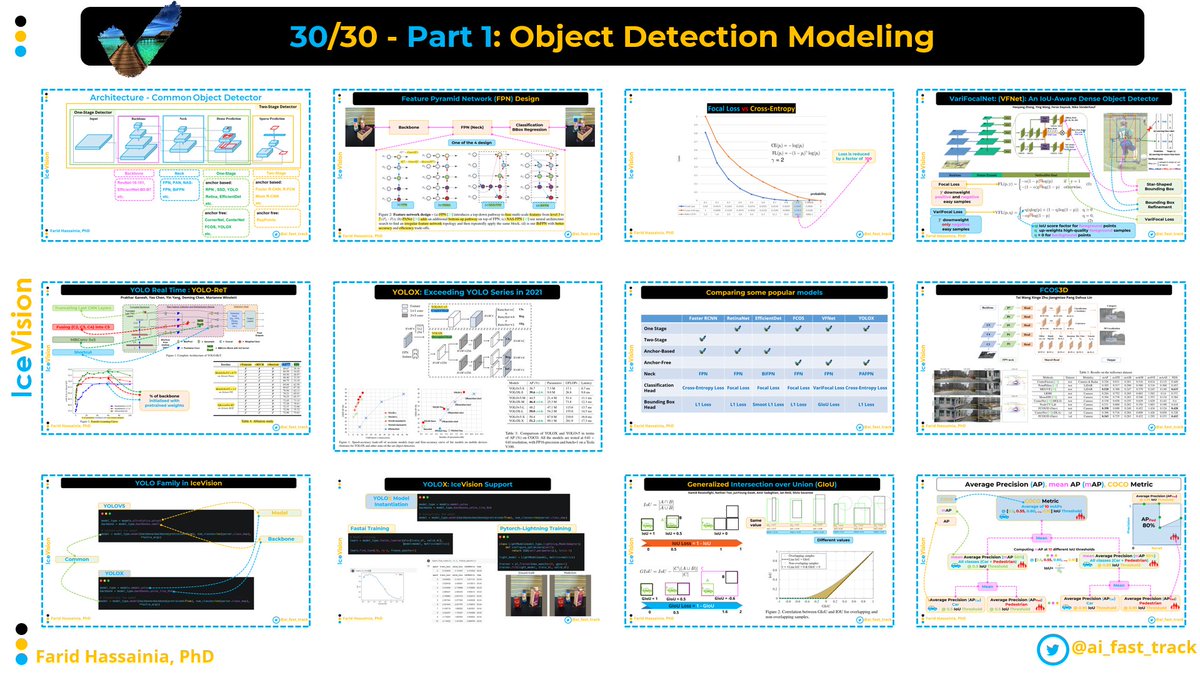
🎉🎊🥳Day 30/30: Labeling data and training object detection models are time consuming and expensive.
Here is a Survey of Self-Supervised and Few-Shot Object Detection (FSOD). Those technique aim at alleviating those issues.
Here is a Survey of Self-Supervised and Few-Shot Object Detection (FSOD). Those technique aim at alleviating those issues.

The authors have categorized, reviewed, and compared several few-shot and self-supervised object detection methods
📌 FSOD is about training a model on novel (unseen) object classes with little data. It still requires prior training on many labeled data of base (seen) classes
📌 FSOD is about training a model on novel (unseen) object classes with little data. It still requires prior training on many labeled data of base (seen) classes
📌 Self-Supervised Learning (SSL) methods aim at learning representations from unlabeled data which transfer well to downstream tasks such as object detection
📌 Combining few-shot and self-supervised object detection is a promising research direction
📌 Combining few-shot and self-supervised object detection is a promising research direction
The authors summarized their main takeaways, made future best practice recommendations, highlighted trends to follow, and given pointers to related tasks.
🔎 TAKEAWAYS & TRENDS
📌 Finetuning is a strong baseline
📌 Impact of self-supervision for object detection
🔎 TAKEAWAYS & TRENDS
📌 Finetuning is a strong baseline
📌 Impact of self-supervision for object detection
📌 Using heuristics to generate weak labels (e.g. data augmentation)
📌 Rise of transformers
📌 Problems with current evaluation procedures
📌 Rise of transformers
📌 Problems with current evaluation procedures
🔗 RELATED TASKS
📌 Weakly-supervised object detection
📌 Self-supervision using other modalities
📌 Low-data object detection
📌 Few-shot semantic segmentation
📌 Zero-shot object detection
📌 Weakly-supervised object detection
📌 Self-supervision using other modalities
📌 Low-data object detection
📌 Few-shot semantic segmentation
📌 Zero-shot object detection
📰 Paper: A Survey of Self-Supervised and Few-Shot Object Detection
abs: arxiv.org/abs/2110.14711
pdf: arxiv.org/pdf/2110.14711…
abs: arxiv.org/abs/2110.14711
pdf: arxiv.org/pdf/2110.14711…
⭐️ If you find this thread helpful, feel free to follow
@ai_fast_track for more OD / CV demystified content in your feed
⭐️ If you could give this thread a quick retweet, it would help others discover this content. 🙏
@ai_fast_track for more OD / CV demystified content in your feed
⭐️ If you could give this thread a quick retweet, it would help others discover this content. 🙏
https://twitter.com/ai_fast_track/status/1465773297837215750
• • •
Missing some Tweet in this thread? You can try to
force a refresh









